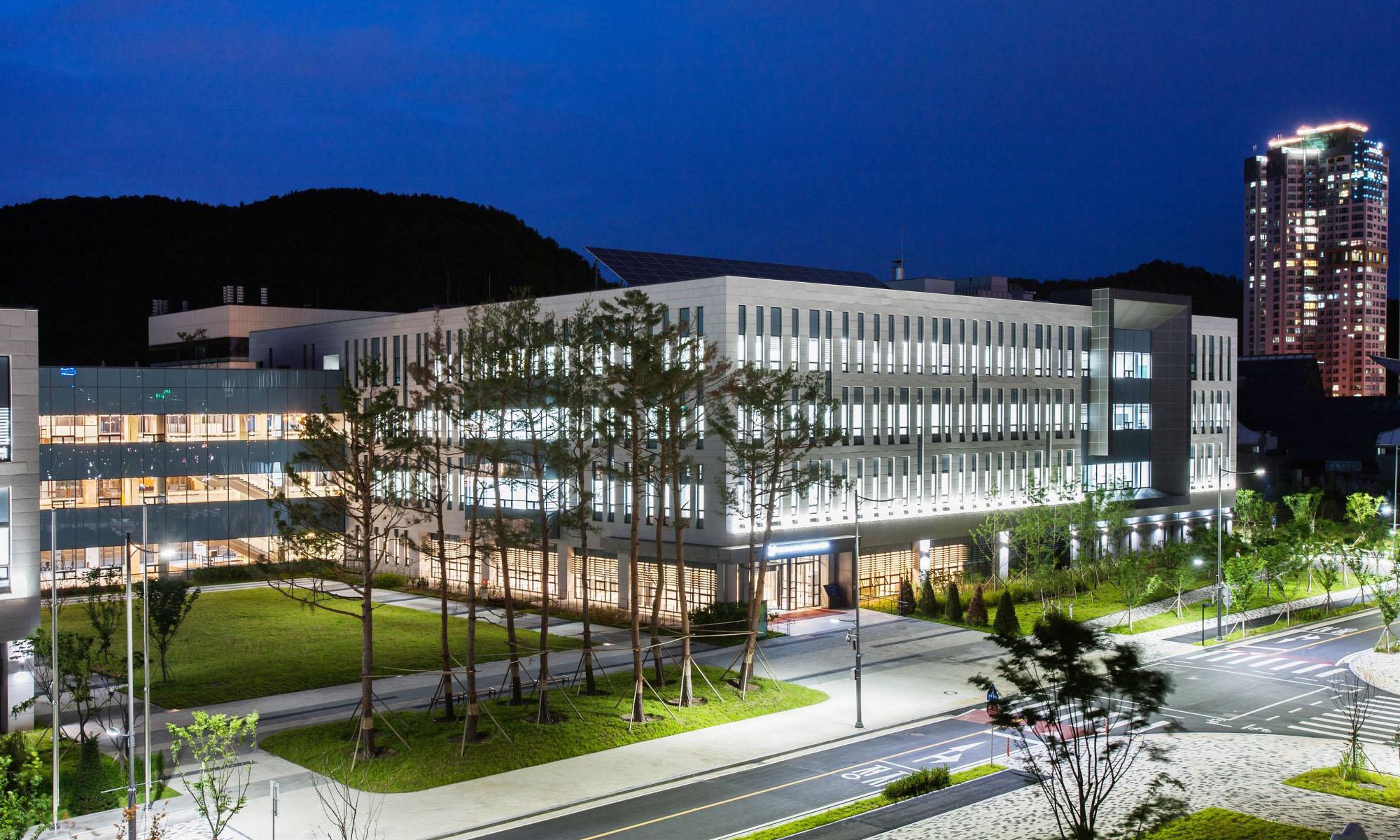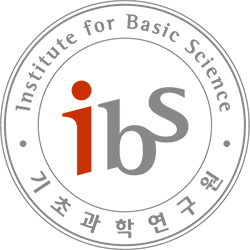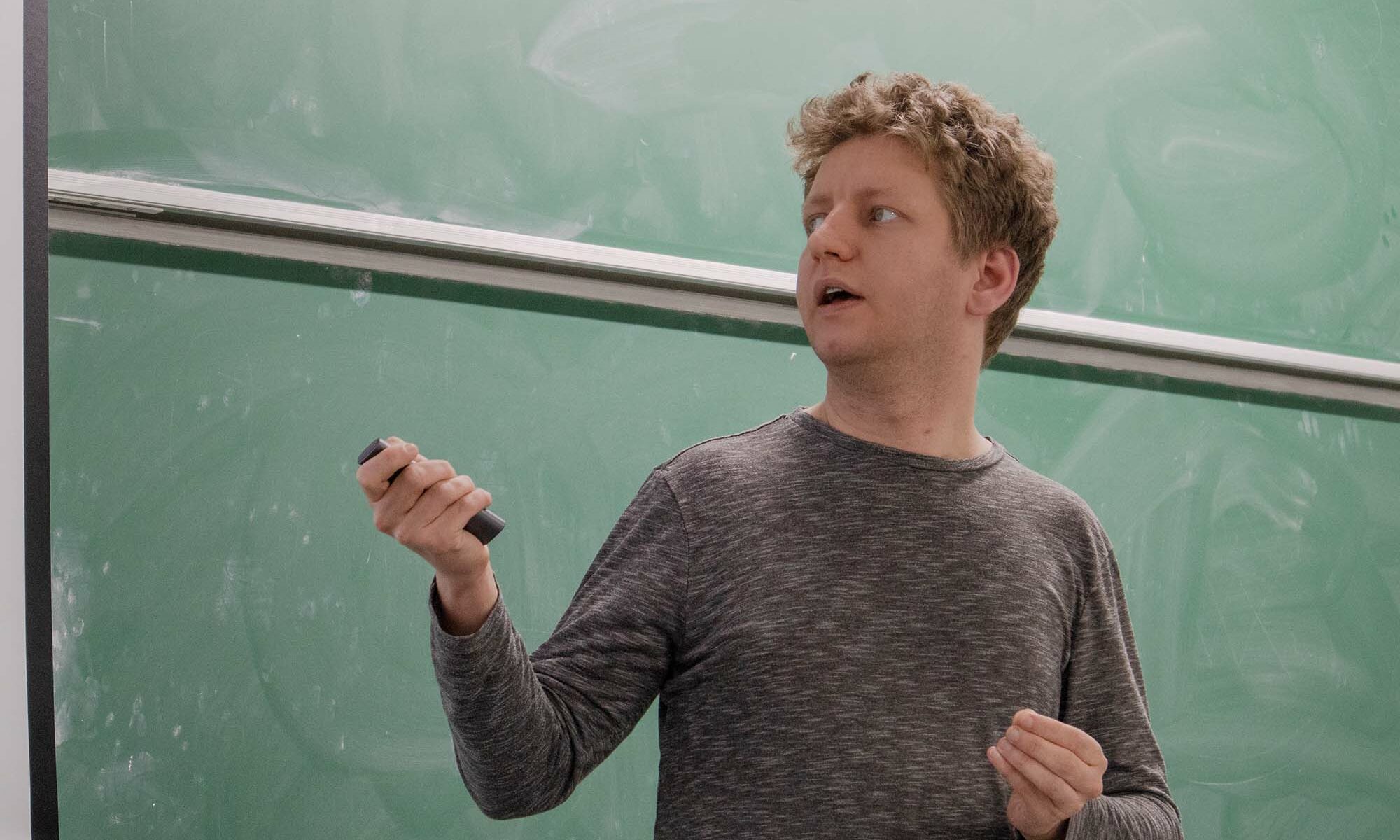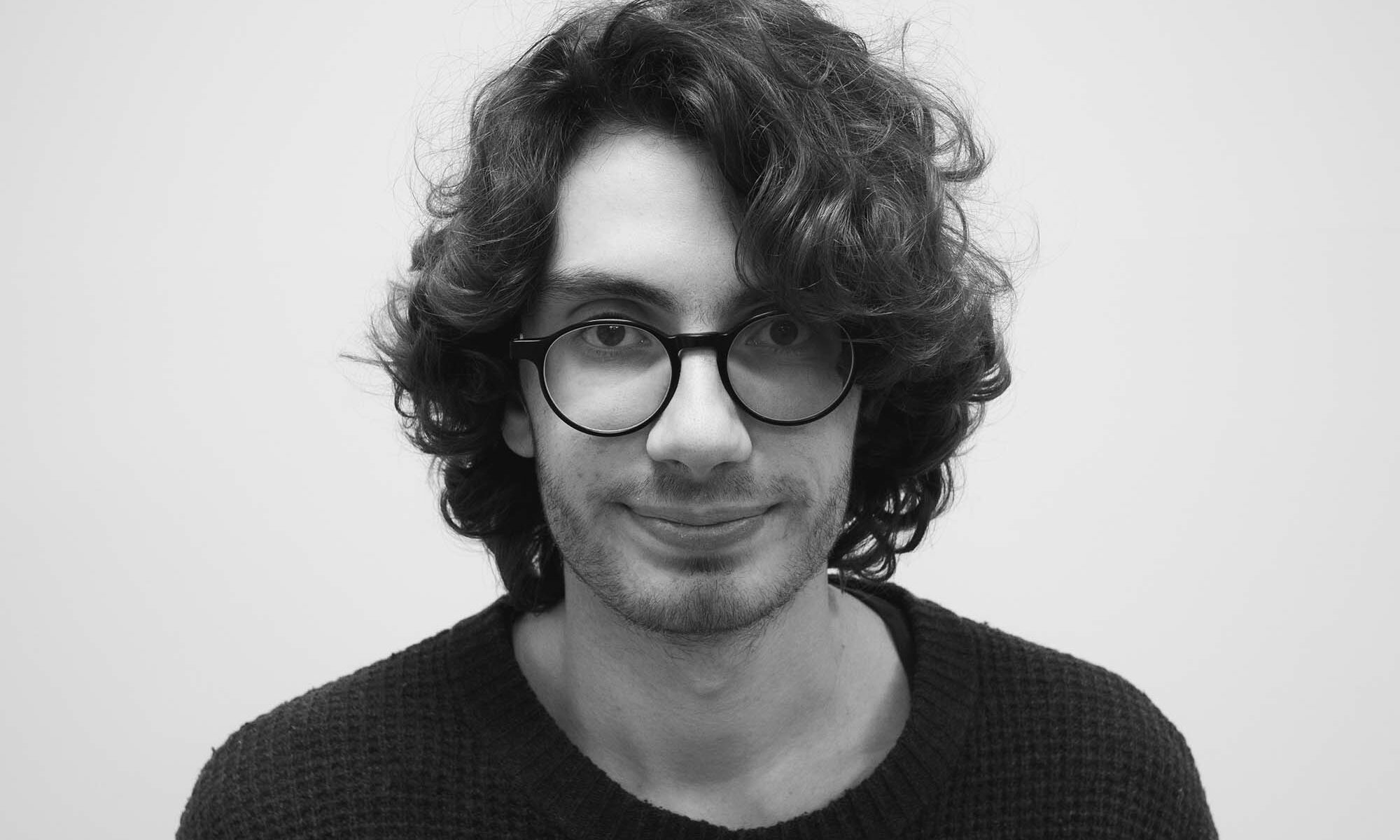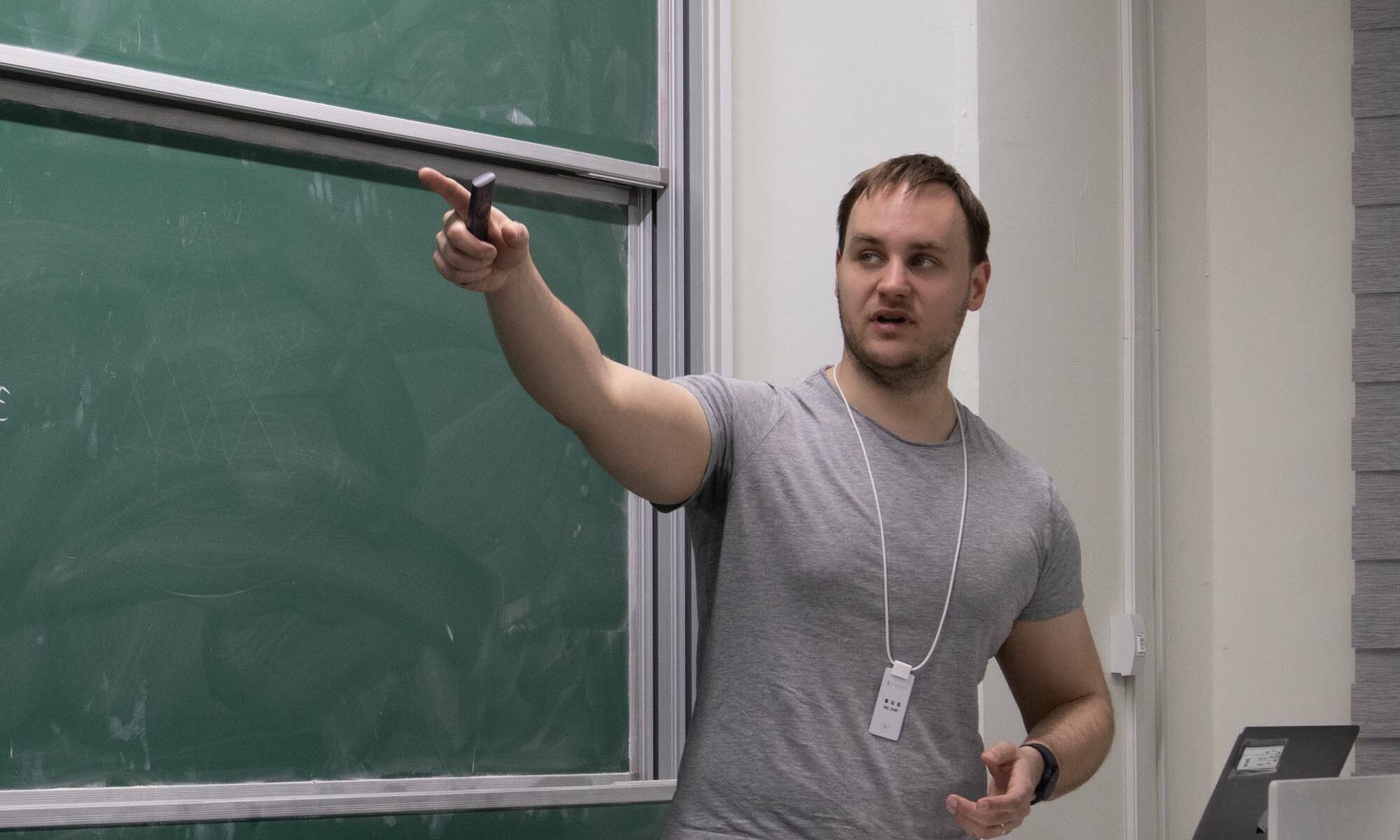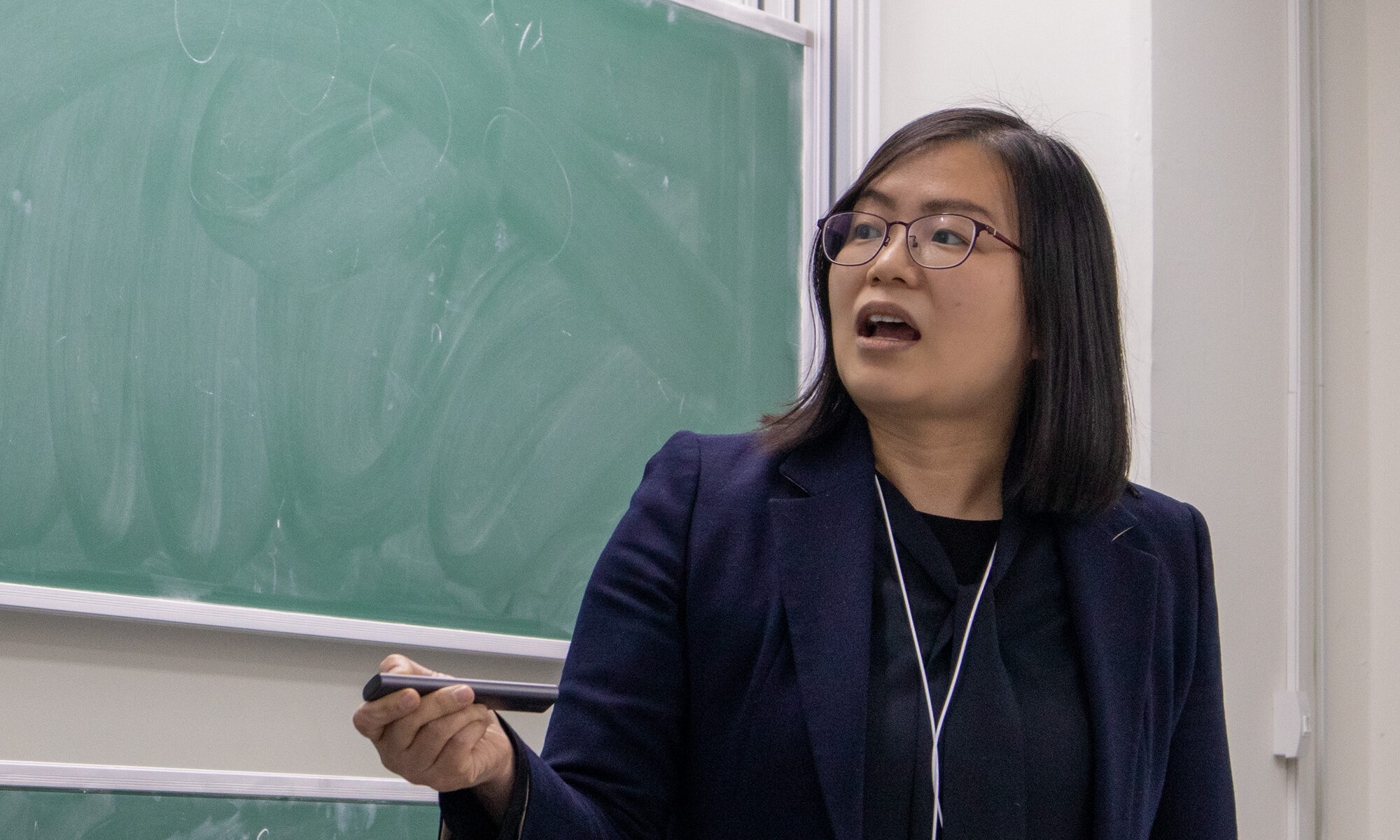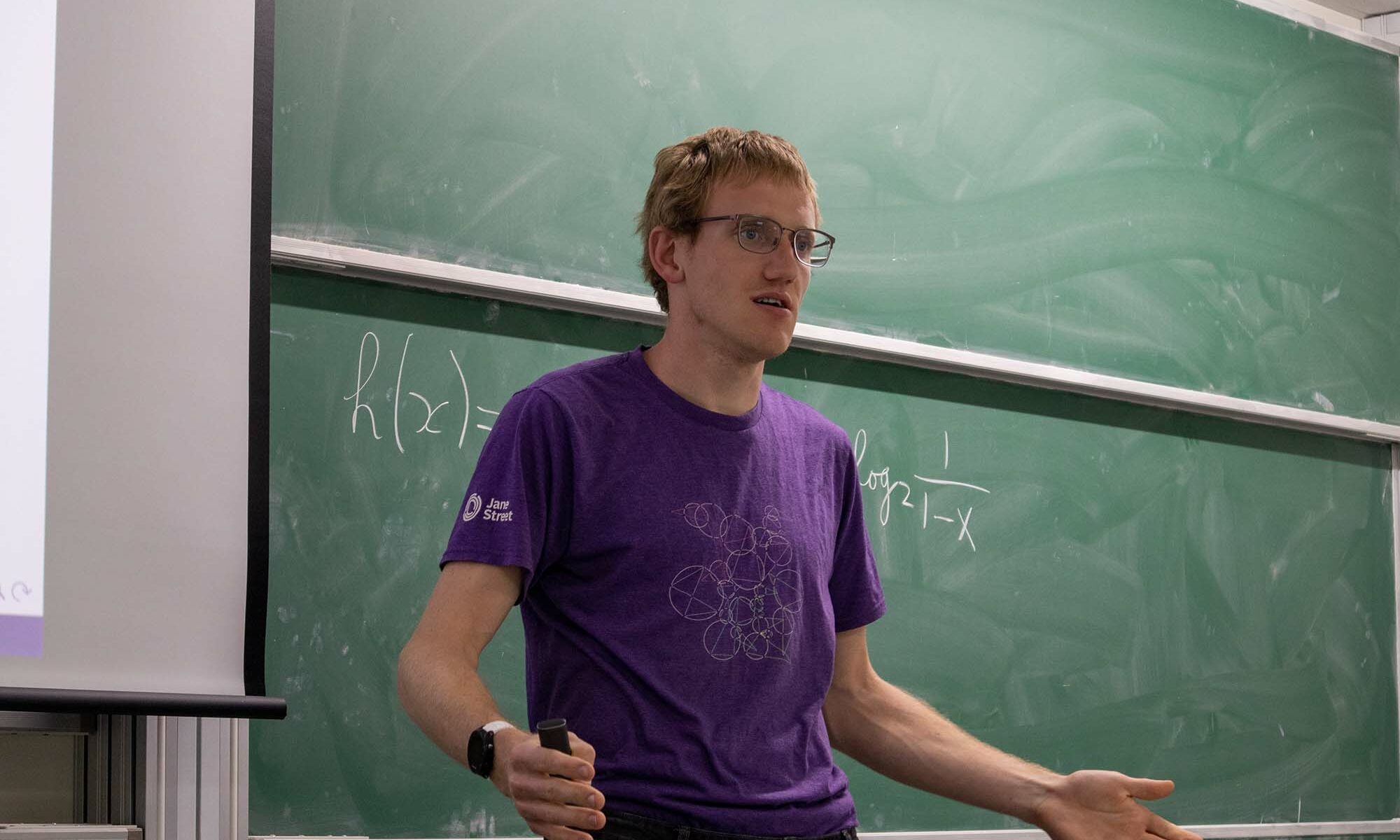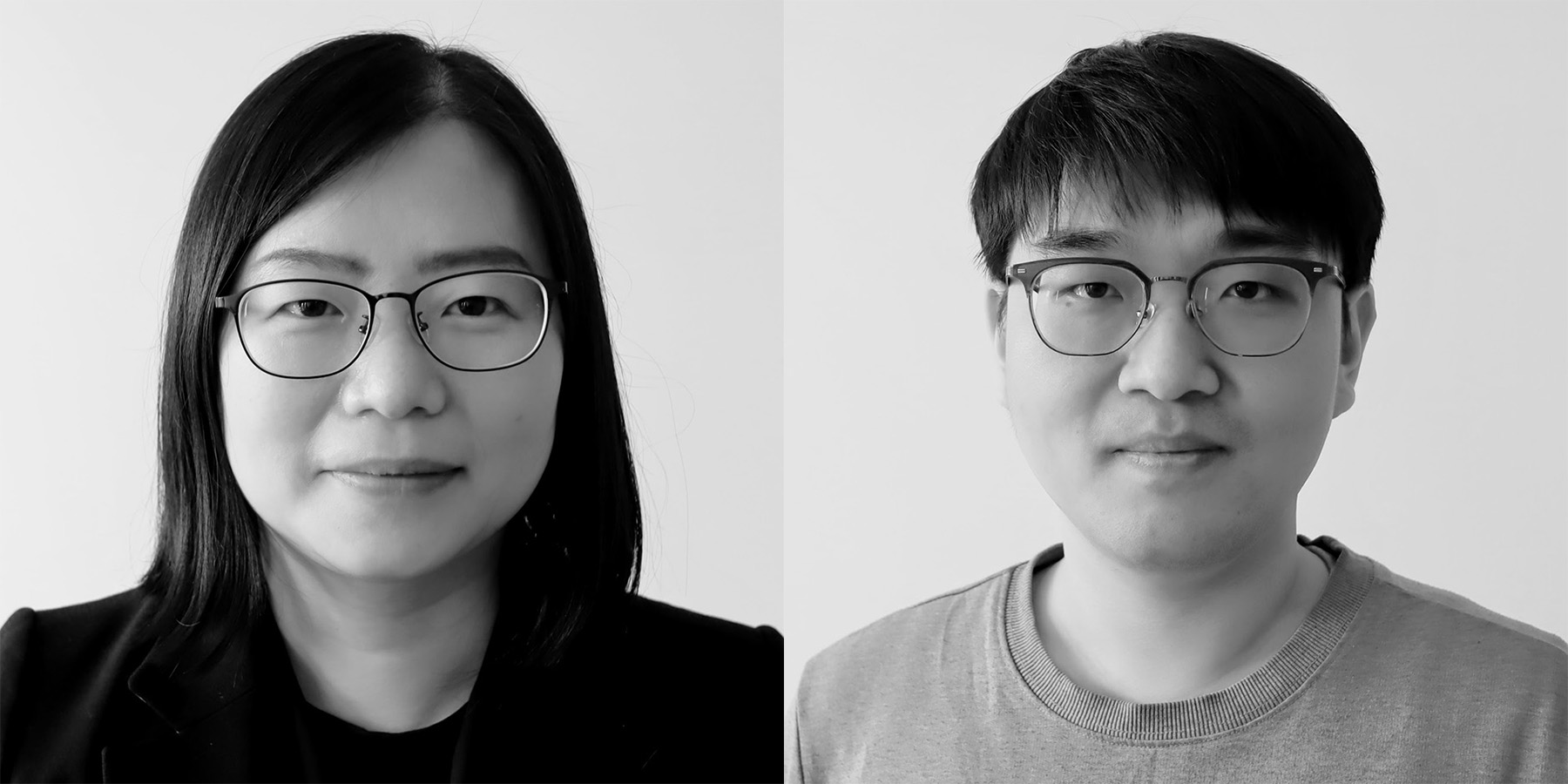On April 25, 2023, Hyunwoo Lee (이현우) from KAIST and IBS Extremal Combinatorics and Probability Group gave a talk at the Discrete Math Seminar about the minimum degree condition to have a partition of a graph into induced subgraphs each having a subdivision of a fixed graph as a subgraph. The title of his talk was “On perfect subdivision tilings.”
James Davies gave a talk on the 𝜒-boundedness and the strong Erdős-Hajnal property of proper pivot-minor-closed classes of graphs at the Discrete Math Seminar
On April 11, 2023, James Davies from the University of Cambridge gave a talk at the Discrete Math Seminar on his two theorems stating that proper pivot-minor-closed classes of graphs are 𝜒-bounded and have the strong Erdős-Hajnal property. The title of his talk is “two structural results for pivot-minors.”
Welcome Hector Buffière, a visiting graduate student in the IBS Discrete Mathematics Group from the ENS-PSL
The IBS Discrete Mathematics Group welcomes Hector Buffière, a visiting graduate student from the ENS-PSL in Paris, France. He is planning to stay with us until August 22, 2023.
István Tomon gave a talk on the intersection graph of axis-parallel boxes at the Discrete Math Seminar
On April 4, 2023, István Tomon from Umeå universitet, Sweden gave a talk at the Discrete Math Seminar on the intersection graph of axis-parallel boxes at the Discrete Math Seminar. The title of his talk was “Configurations of boxes.”
Tianchi Yang gave a talk on the maximum number of edges in k-critical graphs at the Discrete Math Seminar
On March 28, 2023, Tianchi Yang from the National University of Singapore gave a talk at the Discrete Math Seminar about the maximum number of edges in an n-vertex k-critical graph. The title of his talk was “On the maximum number of edges in k-critical graphs.”
Younjin Kim (김연진) gave a talk on the overview of her results in extremal combinatorics at the Discrete Math Seminar
On March 21, 2023, Younjin Kim (김연진) from the IBS Extremal Combinatorics and Probability Group gave a talk at the Discrete Math Seminar on the overview of her results in extremal combinatorics. The title of her talk was “Problems on Extremal Combinatorics.”
Paul Seymour gave an online talk on the size of a clique or an independent set in an H-free graph at the Virtual Discrete Math Colloquium
On March 16, 2023, Paul Seymour from Princeton University gave an online talk at the Virtual Discrete Math Colloquium on the existence of a clique or an independent set of size at least $2^{c\sqrt{\log n \log \log n}}$ in an $H$-free graph. The title of his talk was “A loglog step towards the Erdős-Hajnal conjecture.”
Stijn Cambie gave a talk on recent developments regarding the union-closed sets conjecture at the Discrete Math Seminar
On March 14, 2023, Stijn Cambie from the IBS Extremal Probability and Combinatorics Group gave a talk at the Discrete Math Seminar on recent developments regarding the union-closed sets conjecture initiated by Justin Gilmer. The title of his talk was “Recent progress on the Union-closed conjecture and related“.
Eunjin Oh (오은진) gave a talk on a faster algorithm to solve the planar disjoint-paths problem at the Discrete Math Seminar
On March 7, 2023, Eunjin Oh (오은진) from POSTECH gave a talk at the Discrete Math Seminar on a new faster algorithm for solving the disjoint paths problem on planar graphs. The title of her talk was “Parameterized algorithms for the planar disjoint paths problem“.
Welcome Younjin Kim (김연진) and Minho Cho (조민호), new members of the IBS Extremal Combinatorics and Probability Group
The IBS discrete mathematics group welcomes Dr. Younjin Kim (김연진) and Dr. Minho Cho (조민호), new research fellows at the IBS Extremal Combinatorics and Probability Group.
Dr. Younjin Kim received her Ph.D. from UIUC in 2011 under the supervision of Prof. Zoltan Furedi.
Dr. Minho Cho received his Ph.D. from KAIST in 2023 under the supervision of Prof. Andreas Holmsen.
Both start their positions on March 1.
